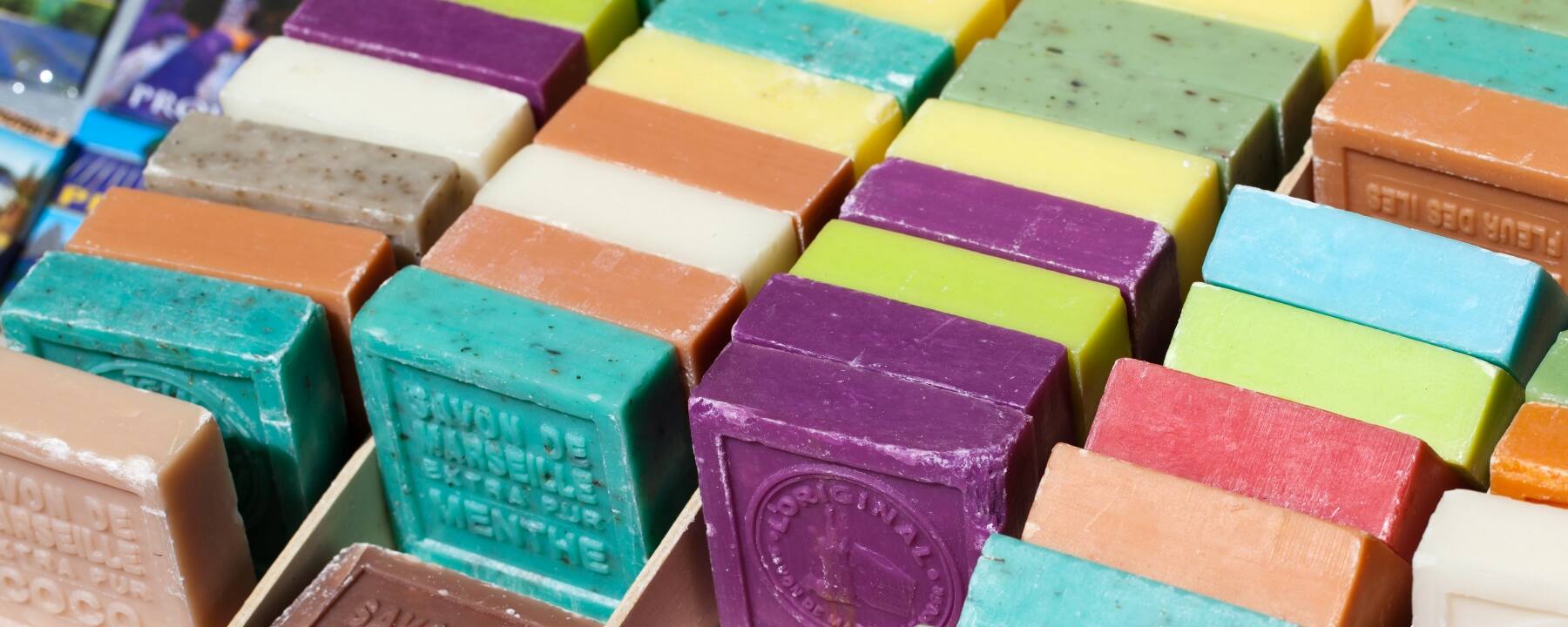
Hair Care & Co.
High demand for solid products
Water plays a key role in cosmetic products and how they are manufactured. But what happens if water is downgraded to a supporting role and its proportion of the end product is reduced or eliminated entirely? Liquid cosmetic products become solid products, known as bars. This trend is not new, though.
Trends come and go in any area of life you choose to look at. Just look at music. Hits make a splash and then disappear, only to storm the charts years or even decades later. Maybe the original version, maybe a cover version. Take a look at the world of fashion. Flared trousers were once in fashion, then they were laughed at, and then much later they enjoyed a revival.
Things are similar in the world of cosmetics and skincare. Ingredients are making a comeback. Being natural is "in" again. And it’s the same thing with solid and liquid products.
An example: keeping hair clean
Some "hair care products" used to be cooked up from a recipe in kitchens, or over fires and stirred together in a pot. At some point, bars of soap became the favorite for washing hair. At that time, curd soap was a widespread solid product that was commonly used. It released dirt, grease, dust and oils from the scalp, cleaned the hair, and got rid of unpleasant odors. However, the hair didn't look nice after this “treatment”. Limescale deposits, which made the hair difficult to manage, were part of the problem. The alkaline pH of the soap did the rest. Remedial action: lots of brushing and, if you could afford it, rinsing your hair with acidic essences. This procedure is still in fact partially followed with today’s hair soaps.
In 1903, shampoo in a pouch conquered the market. You simply dissolved this new powder in water and applied it to your hair. The first "all-in-one cleaning solution" for hair had arrived. The first liquid hair shampoo then followed in 1927. What these new liquid products delivered in terms of performance was particularly groundbreaking.
Their ingredients and the gentle effects were true innovations. Unlike traditional alkaline soaps, liquid soaps based on sulfates were able to match the skin’s slightly acidic pH without sacrificing their cleaning power. The term "pH neutral" became essential, and it has lost none of its importance to the present day.
Today's demands
“Just” cleaning is no longer enough. The following are also required (non-exhaustive list):
- Delivering on the performance profile: Do what the shampoo promises
- Well-tolerated by the skin
- Appealing texture and appearance
- Optimal sensory properties
- Stable formulation
- Pleasant smell
- Environmentally harmless
- Safety and no toxicological ill effects
Solid products are now making a comeback. An entire range of products these days have a solid version in their portfolio alongside their liquid version – including soaps. Examples of what can now be found on offer:
- Solid hair shampoo
- Hair soaps
- Solid shower gel
- Solid deodorant
- Solid body lotion
- Solid makeup remover
- Toothpaste pills
- Shaving soap
There are several reasons why solid is now back in fashion, but this has less to do with improved performance and more with changes in what people want and need. Not only have consumers become more environmentally aware in recent years, but they are much more knowledgeable about the issues. In the cosmetics sector, this means consumers are scrutinizing ingredients, companies’ sustainability strategies have become part of the buying decision and, in addition to their own needs, consumers are focusing more on nature and the environment. While manufacturers need to look at how products can be brought to market as cost-effectively as possible.
Water plays a major role
Which brings us back to the topic of water. Even our ancestors knew: water alone is not enough. To make hair shine, it was important to find additives and ingredients that could be used to care for, clean and style hair. Even so, water is the main ingredient by volume in a liquid shampoo. All the other ingredients are dissolved in it to provide the desired effect at the end of the day.
This is the important point: water plays a fundamental role in chemical manufacturing. Whether used as a cooling agent, a solvent or a cleaning agent during the manufacture of products, or when delivering products: water is always involved. This applies more than you might imagine for personal care products. Many shampoos available on the market contain over 85% water. This also applies to some skincare products.
Definition of a “cosmetic product”
Substances or mixtures intended to come into external contact with parts of the human body (skin, hair, nails, lips and external genital areas) or with the teeth and mucous membranes of the oral cavity, for the sole or primary purpose of cleaning, perfuming, altering their appearance, protecting them, keeping them in good condition or influencing the body's odors
Sustainability
"Sustainable development is development that meets the needs of the present without compromising the ability of future generations to meet their own needs. This goal can only be achieved if every individual takes action.“ - SOURCE: BUNDESTAG.DE - WEBSITE OF THE LOWER HOUSE OF THE GERMAN PARLIAMENT
The high water content is largely eliminated in solid products. They contain little or no water, but thanks to their more concentrated formulation, they do not sacrifice any of the ingredients needed for treatment and care. Plus, unlike the liquid versions, there is no need to add preservatives. The lack of water means that fungi, yeasts and bacteria have no “breeding habitat”, as they cannot multiply without water. This means the product cannot be come “infested”.
Packaging waste significantly reduced
This is leads us neatly on to the numerous advantages offered by solid shampoos, shower gels, etc. As they are concentrated, they can be used more efficiently and they last longer. The bars are ideal for travel and can be carried in check-in or carry-on luggage on an aircraft. In terms of the environment, it’s not just about reducing the amount of water in the products themselves — and production, packaging, weight and volume all benefit, too. Less energy is consumed during transport, meaning the CO2 footprint is reduced.
The overall consideration of the CO2 footprint of a product also includes a factor over which manufacturers and producers have no control: consumer behavior. This is because water consumption in the shower and the selected water temperature can have a significant influence on the environmental assessment of a product.
Many of these solid products can be sold with substantially reduced packaging, which is often made from paper, cardboard or recycled materials. Plastic bottles can be avoided. Nevertheless, it is important to mention that the packaging is not only there to produce waste arbitrarily – it also has a reason for its existence. For example, opaque bottles protect the product from UV light and any potential changes in color and performance that may result from this. The bottles/packaging also play an important role in protecting the product from contamination and maintaining the necessary level of hygiene.
If we look at solid creams or body butter, there are some problems that consumers need to be aware of. Especially in summer, these products can fall victim to heat and melt before they can be used. Of course, either this cannot happen if they are packaged in bottles, or it will have no effect on how they work. It is also possible that your body temperature may not be high enough to turn the product into a liquid that you can apply without leaving residue. Liquid solutions do seem to have the advantage here.
In addition to all the environmental benefits, the consumer gets value for money from these new solutions. One thing always applies: skincare and haircare are very personal and should make you feel good. Choose something that works for you – whether it's solid or liquid.
This might also interest you:
A benefit of doing without water
To achieve the goal of a sustainable future, we all need to work together: politicians, industry, and consumers.
More informationNo Poo – better without
Of course, we recommend using shampoo and related products for appropriate care, but using more shampoo does not necessarily mean better results
More information

